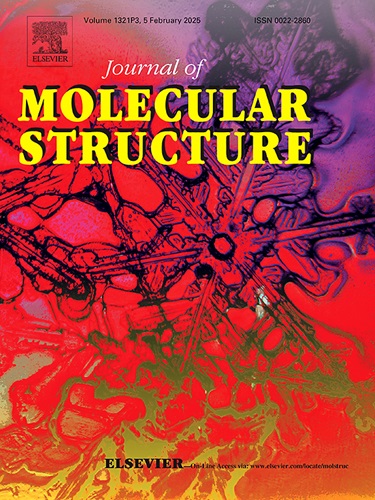单层Ti₃C₂助催化剂BiFeO₃/CdS复合结构优化对RhB的增强压电光催化脱除
IF 4
2区 化学
Q2 CHEMISTRY, PHYSICAL
引用次数: 0
摘要
本研究通过静电自组装成功合成了BiFeO3/CdS/Ti3C2 (BCT)复合材料,提高了BiFeO3的光催化性能。复合材料表现出优异的压电光催化活性,在120分钟内达到98.0%的RhB降解(速率常数:0.0288分钟),比原始BiFeO3提高12.68倍,同时在四个循环后保持95%的降解效率-比BC-30%提高3.3倍。这种性能的增强源于三个协同机制:(1)ii型BFO/CdS异质结增强了光吸收和电荷分离效率;(2)超声诱导压电极化,在放大BFO内部场的同时抑制界面复合;(3) Ti3C2同时作为电荷转移介质和光缓蚀剂以保证稳定性。EPR和自由基捕获实验证实,该复合材料在不同条件下(pH 3-9,不同剂量/浓度)均表现出一致的高效率。这种将CdS和Ti3C2与BFO的战略性集成为设计先进的BFO基压电光催化剂提供了一种新的方法。本文章由计算机程序翻译,如有差异,请以英文原文为准。
Optimization of BiFeO₃/CdS composite structure with monolayer Ti₃C₂ cocatalyst for enhanced piezo-photocatalytic removing RhB
In this study, a BiFeO3/CdS/Ti3C2 (BCT) composite was successfully synthesized via electrostatic self-assembly to enhance the photocatalytic performance of BiFeO3. The composite exhibited exceptional piezo-photocatalytic activity, achieving 98.0% RhB degradation within 120 min (rate constant: 0.0288 min⁻¹), representing a 12.68-fold enhancement over pristine BiFeO3, while maintaining 95% degradation efficiency after four cycles - a 3.3-fold improvement compared to BC-30%. This performance enhancement originates from three synergistic mechanisms: (1) Type-II BFO/CdS heterojunction for enhanced light absorption and charge separation efficiency; (2) ultrasound-induced piezoelectric polarization that simultaneously amplifies BFO's internal field and suppresses interfacial recombination; and (3) Ti3C2 serving as both charge-transfer mediator and photo corrosion inhibitor to ensure stability. The composite demonstrated consistent high efficiency across varied conditions (pH 3-9, different dosages/concentrations), as verified by EPR and radical trapping experiments. This strategic integration of CdS and Ti3C2 with BFO presents a novel approach for designing advanced BFO-based piezoelectric photocatalysts.
求助全文
通过发布文献求助,成功后即可免费获取论文全文。
去求助
来源期刊

Journal of Molecular Structure
化学-物理化学
CiteScore
7.10
自引率
15.80%
发文量
2384
审稿时长
45 days
期刊介绍:
The Journal of Molecular Structure is dedicated to the publication of full-length articles and review papers, providing important new structural information on all types of chemical species including:
• Stable and unstable molecules in all types of environments (vapour, molecular beam, liquid, solution, liquid crystal, solid state, matrix-isolated, surface-absorbed etc.)
• Chemical intermediates
• Molecules in excited states
• Biological molecules
• Polymers.
The methods used may include any combination of spectroscopic and non-spectroscopic techniques, for example:
• Infrared spectroscopy (mid, far, near)
• Raman spectroscopy and non-linear Raman methods (CARS, etc.)
• Electronic absorption spectroscopy
• Optical rotatory dispersion and circular dichroism
• Fluorescence and phosphorescence techniques
• Electron spectroscopies (PES, XPS), EXAFS, etc.
• Microwave spectroscopy
• Electron diffraction
• NMR and ESR spectroscopies
• Mössbauer spectroscopy
• X-ray crystallography
• Charge Density Analyses
• Computational Studies (supplementing experimental methods)
We encourage publications combining theoretical and experimental approaches. The structural insights gained by the studies should be correlated with the properties, activity and/ or reactivity of the molecule under investigation and the relevance of this molecule and its implications should be discussed.
 求助内容:
求助内容: 应助结果提醒方式:
应助结果提醒方式:


